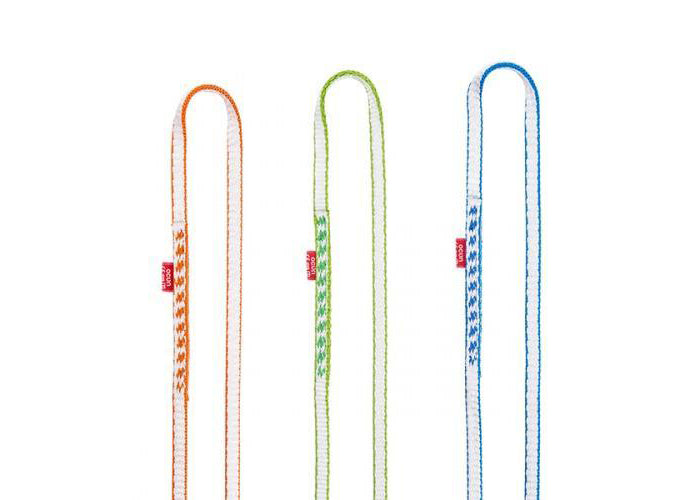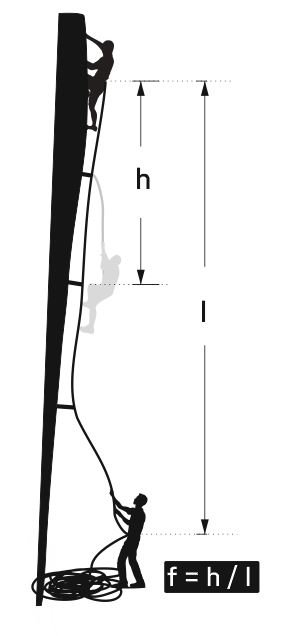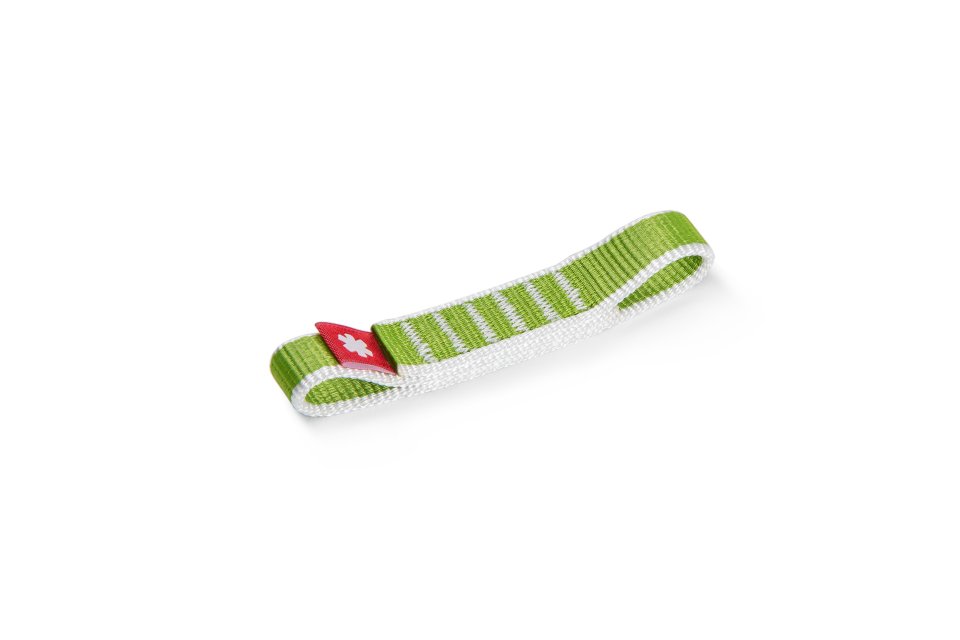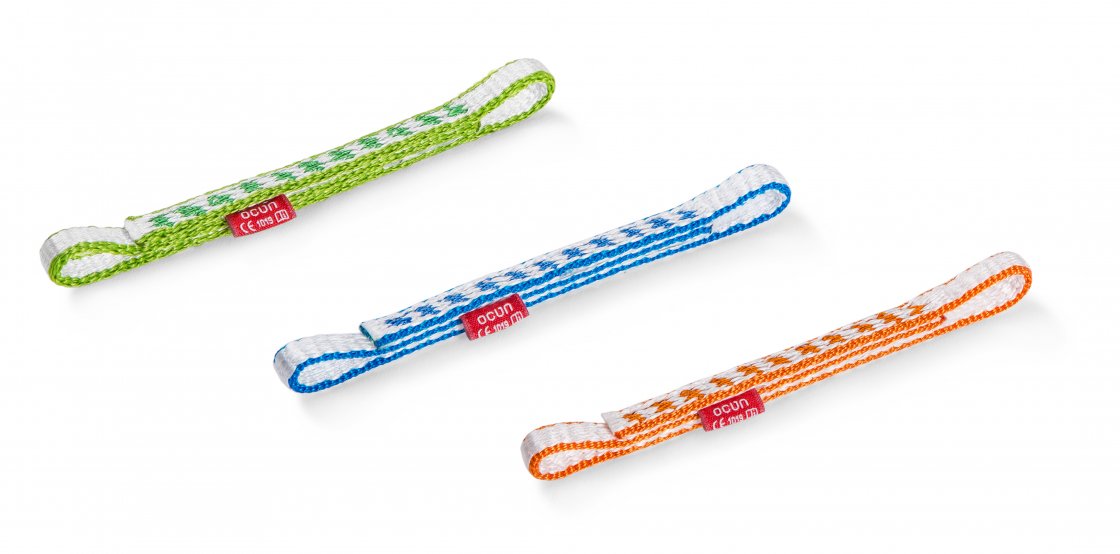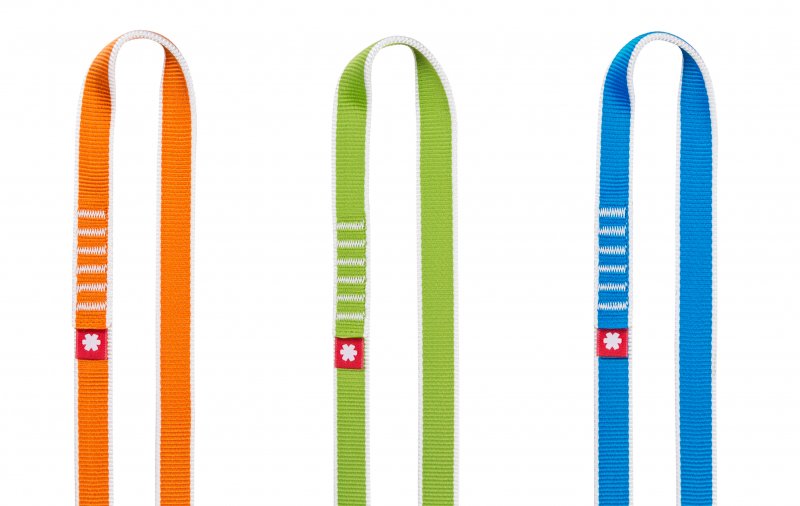
Do you prefer clipping your quickdraws into polyamide or Dyneema® slings? They differ in more ways than weight alone. Knowing these differences is particularly useful when you’re choosing quickdraws, making a personal anchor system, or tying knots in a sling used as a wedge or a nut in a crack.
We all climb on slings, clip ourselves into them and trust them. Yet only few of us actually know how to take proper care of them, how resistant they are, or when it’s time to replace them with new ones.
In terms of durability and resistance, slings are the most fragile part of quickdraws. Unlike carabiners, slings are susceptible to UV radiation, chemical substances and rotting, depending on the material they are made of. In this blog post, we focus on these particular materials – there are significant differences between polyamide slings and slings made of polyethylene, which we call Dyneema®.
Difference is more than just weight
Very few people can give a clear explanation of what the differences actually are. This was borne out by a mini survey we conducted among climbers and salesclerks in climbing equipment stores. “Dyneema® is very thin so it’s lighter than polyamide. Polyamide, on the other hand, is more resistant to weather conditions and has longer durability,” explained one of the salesclerks in an outdoor equipment store. This explanation usually satisfies most laymen. Because it’s simple and makes sense. Besides, it’s not completely wrong - Dyneema® is indeed light. At the same time, it’s not exactly correct – resistance against weather conditions is such a vague idea that you can’t simply say polyamide is generally more resistant. Polyamide and Dyneema® react differently to various weather conditions. As a result, each of these materials is better suited for a particular climbing discipline.
You can easily distinguish polyamide from Dyneema® at a glance. As has already been said, Dyneema® slings are thin. In addition, because the process of dyeing polyethylene strands is very complicated, Dyneema® is mostly white (the colored edges and threads running through the sling are usually made of polyamide). Dyneema® also has a slightly smoother and more slippery surface.
Both materials have significant advantages which determine the situations in which these materials should be used. For the sake of clarity, we have listed the advantages of Dyneema® and polyamide slings in the following table:

| PA slings | Dyneema® |
| + elasticity of the strands => slings stretch more | + thinner material with great strength => low weight |
| + greater tensile strength | + better resistance when hanging over an edge |
| + more convenient for knot tying | + better resistance to humidity |
| + wider slings don’t cut into hands and are easier to grasp | + better resistance to abrasion |
| + | + better resistance to solar radiation, chemicals and microorganisms |
Every coin has two sides, and the same goes for slings. In the following table are therefore listed the downsides of polyamide and Dyneema® slings, suggesting which situations they shouldn’t be used in. Let’s take a look at them:
| PA slings | Dyneema® |
| - water absorption => wet slings are less strong | - low elasticity |
| - Polyamide slings are heavier than Dyneema® slings of the same length | - low resistance to thermal stress |
|
- low resistance to UV radiation => don’t leave your polyamide slings clipped into a route for months at a time |
- not suitable for knot tying – knots don’t hold, they move and untie easily, thus decreasing the overall strength of the sling |
| - | - faster degradation |
For mountaineering and onsights
What does all this imply? If we compare all the information provided in the tables, the bottom line is that Dyneema® quickdraws are particularly suitable for mountaineering and long routes. They are thin and resistant to abrasion, and therefore represent the ideal companion for alpine style climbing. Dyneema® copes better with increased air humidity, which can occur all of a sudden as a result of an unexpected mountain storm.
They are also useful in onsight climbing, when you have all the rack you need to climb a route clipped into your harness. Using lightweight quickdraws means less rack weight to carry when climbing, which might turn out to be a key success factor in a dramatic onsight challenge that’s pushing your limits.
For working the route
Sport climbers, on the other hand, swear by quickdraws with polyamide slings. Their elasticity helps absorb the energy of a fall, while greater tensile strength prolongs their durability, and, last but not least, when you’re out of juice, it’s easier to pull your body up grabbing a wide polyamidequickdraw than a Dyneema® one. These things happen when you’re climbing to the max. Show me a climber who’s never pulled him/herself up on a difficult route by grabbing a quickdraw.
If you have your rack clipped into bolts on difficult routes prior to climbing, it doesn’t matter that the quickdraws with polyamide slings you’re using are heavier. However, we don’t recommend leaving quickdraws clipped to bolts for extended periods. Because if there’s one “weather condition” to which polyamide isn’t perfectly resilient, it’s UV radiation.
That being said, we can’t use the formula “Dyneema® for mountaineering and polyamide for sport-climbing” when talking about slings alone. This is because polyamide is better for tying knots, so polyamide slings are often used for additional protection on mountain routes and difficult sections of sandstone routes.
You should also go for polyamide slings if you’re making a personal anchor. The reasons are still the same - greater tensile strength and greater elasticity. Although Dyneema® slings have enough power to keep the climber attached to an anchor, it’s definitely not a good option when it comes to absorbing the energy of a falling climber. I wonder, though, why anyone would ever consider falling into a personal anchor. Everyone knows it’s intended to temporarily hold the weight of the climber, not to directly catch falls.
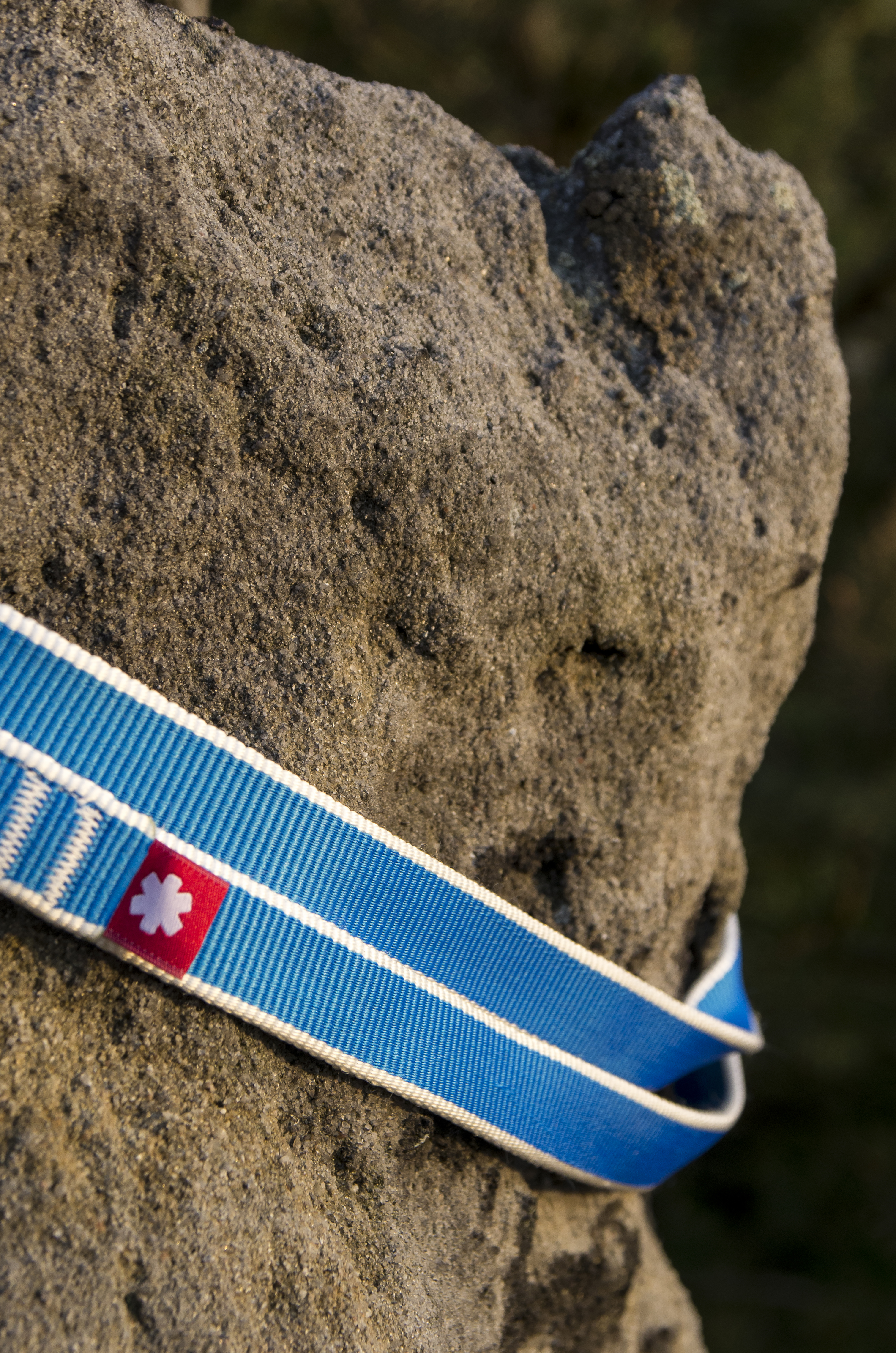
One useful rule
This one should go without saying, but I see many climbers make the same mistake over and over again, so let me repeat this rule one more time. Make sure you remember and respect at all times the rule of “metal + slings”. Whether you’re setting up a belay station, clipping yourself to an anchor or wedging your own protection device in the wall, never connect two pieces of textile without placing a carabiner between them. As a result of friction, one of the pieces of textile could easily be burned or abraded into two parts, regardless of whether it’s made of Dyneema® or polyamide. The bottom line is that in any chain of protection, metal components must alternate with textile components. Well, metal and metal can be combined. But never a textile piece with another textile piece.
A couple of tricky questions
There are many questions and dilemmas tied to (ha ha) slings. If you want to stay safe and sound when climbing, you should be able to answer those question based on your knowledge. We’ve included these questions in a little quiz that we’ve prepared for you. Correct answers are provided bellow. Here they are:
1. What exactly does fall factor mean?
2. Why do knots decrease the load-bearing capacity of slings?
3. Is it true that if you fall into a personal anchor system from a static sling, the anchor system could break? How powerful must the fall be in order for this to happen?
4. How come that when you build an anchor by placing polyamide or Dyneema® slings around a rock, and this anchor catches your fall, the slings won’t break?
5. How often should you replace quickdraws with Dyneema® and polyamide slings as a matter of precaution?
Correct answers:
1. The fall factor “f” is a dimensionless value indicating the ratio between the fall length “H” and rope length “L” – i.e. the length of the rope that absorbs the impact force of the fall. The formula is as follows: f = H/L. It’s recommended to get rid of any material that has absorbed a major fall. A major fall means a fall with a factor greater than 1. The belaying method is nevertheless also very important. Your climbing gear is stressed to a different extent depending on whether the fall is absorbed with a hard catch or with a soft catch (dynamically). Adequate dynamic belaying does obviously less harm to the climber as well as the material.
2. When you tie a knot, it creates sharp edges and a friction surface that both end up damaging strands of the slings. The strength of the sling decreases by about 30–80 %, depending on the knot type. You should therefore tie only those knots that are really necessary.
3. A personal anchor device made of slings is not intended to catch falls. If this situation occurs, Dyneema® slings above a certain length can be dangerous. This is because Dyneema® has a very low elongation (roughly 4%). Since the elongation of polyamide slings is about 25%, they’re able to absorb the impact force much better.
4. This is due to the fact that the impact force is absorbed by the dynamic rope together with harness and the climber’s body. Anchors made of slings around a rock are therefore safe.
5. The maximum durability of all slings when used occasionally and stored appropriately is 10 years. Sometimes it’s necessary to get rid of one immediately though, depending on the condition of the sling and the way it’s been used in the past. This applies to slings that have recently absorbed a major fall or that are showing signs of damage. The durability of slings is significantly shortened by the following factors: everyday usage, damaged components of the sling, exposure to the effects of chemical substances, exposure to high temperatures, long-term exposure to UV radiation, abrasion, excessive load, humidity, frost, dirt and improper maintenance. If you have any doubts about the safety and reliability of a particular sling, you should stop using it or contact the manufacturer. Detailed information is included in the user guide, which will be given to you every time you buy a sling or a quickdraw.
Read the user guides, use your common sense and climb safely. Enjoy the summer!

